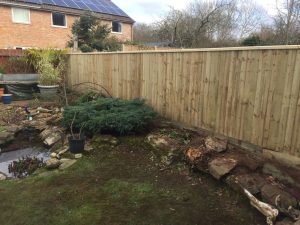Retreat to a garden and patio design that’s beautiful year-round, and takes minimum fuss. What makes this possible? Carefree plants with continuous blooms, and a well-planned garden structure.
You don’t need to be a lawn and garden expert or landscape designer to do this. Here are a few tips for creating a super yet simple garden and patio design that will be a knockout!
The first step is to take a birds-eye view of your garden and patio area. Make a rough sketch of your space, and play around with a few designs until you like what you see. As you’re doing this, get some great ideas from existing garden and patio decorations. Pay a visit to other people’s gardens, or public gardens. Look through home landscaping and gardening magazines, find what you like, and develop plans of your own.
Decide what style or theme is right for you… formal, casual, rustic, Southwestern, Japanese… there are enormous possibilities. Then stay with that style and theme so the overall effect does not become confusing. For instance, you wouldn’t want to combine bronze garden sculptures of saints or cherubs with rustic wooden wagon wheels.
 Imagine what your patio area will most often be used for. You may plan to entertain lots of outdoor dinner guests. If so, be sure your patio space has plenty of room for the largest number of people right from the beginning. Your patio may be more of a private, reflective retreat for enjoying the sun, reading a book, or gazing up at the stars. Determine the use of shade, open sun, or even covering it with a roof.
Imagine what your patio area will most often be used for. You may plan to entertain lots of outdoor dinner guests. If so, be sure your patio space has plenty of room for the largest number of people right from the beginning. Your patio may be more of a private, reflective retreat for enjoying the sun, reading a book, or gazing up at the stars. Determine the use of shade, open sun, or even covering it with a roof.
Now take your favourite ideas and put them into your rough plans – and soon you’ll have a design that is ready for action.
The next step is to create your garden and patio design to scale – you can use landscaping software for this, or do it by hand. Choose the flowers you intend to plant, noting how many you will need for each month of your growing season, and select the landscaping structures that will give your design its form.
Some say the secret to a beautiful garden and patio design is having a good amount of hard structure. This is what landscape designers refer to as “good bones” – walls, fences, garden bridges, gates, garden arbours, landscape statues, garden fountains … even a strong line of evergreen plants.
Garden structures such as these create forms and lines, giving your garden and patio design definition and dimension. Plus, in the winter when most plants are empty and bare, your garden will preserve its shape and sense of completeness. It’s amazing how just one or two structures can produce this satisfying effect.
Most garden and landscaping structures are built to withstand the elements. Treated pine, cedar and teak garden furniture, trellises, arbours, and decorative fencing are great choices. Stone, copper, and bronze garden statuary will never let you down. Garden fountains bring incredible beauty and atmosphere to any garden and patio design – in fact, entire gardens have been built around them.
Next, choose annual spring flowers and perennial plants that will give you blooms from one season to the next. For instance, select carefree roses that need no pruning or spraying, and bloom continuously from spring through fall. Fill planters with beautiful blooming flowers such as Oriental lilies or verbena for different colours all summer long. Establish flower beds in corners or along walkways. Always consider your local climate and plant according to the sun and shade needs of your plants.
As you plan your garden and patio design, create paths or walkways that lead from one area to the next. Rambling garden paths are relaxing and charming… and if laid out thoughtfully, will be a big help to you as the gardener. Paths can be of stone, brick, flagstone, gravel, or mown turf, although grass paths require more upkeep. Garden sculptures or sitting benches thoughtfully placed along the way provide wonderful expression.
If you want to garden and patio designs that are pre-drawn, there are ready-made plans available in books and magazines. This is another fine way to get off to a solid start. Use pre-made garden plans from start to finish, or incorporate parts of them right into your own creative plans.

